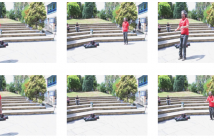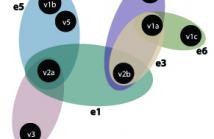
- Read more about Summarization of Human Activity Videos Via Low-Rank Approximation
- Log in to post comments
Summarization of videos depicting human activities is a timely problem with important applications, e.g., in the domains of surveillance or film/TV production, that steadily becomes more relevant. Research on video summarization has mainly relied on global clustering or local (frame-by-frame) saliency methods to provide automated algorithmic
- Categories:
 1 Views
1 Views
- Read more about Summarization of Human Activity Videos Via Low-Rank Approximation
- Log in to post comments
Summarization of videos depicting human activities is a timely problem with important applications, e.g., in the domains of surveillance or film/TV production, that steadily becomes more relevant. Research on video summarization has mainly relied on global clustering or local (frame-by-frame) saliency methods to provide automated algorithmic
- Categories:
 1 Views
1 Views
- Read more about Summarization of Human Activity Videos Via Low-Rank Approximation
- Log in to post comments
Summarization of videos depicting human activities is a timely problem with important applications, e.g., in the domains of surveillance or film/TV production, that steadily becomes more relevant. Research on video summarization has mainly relied on global clustering or local (frame-by-frame) saliency methods to provide automated algorithmic
- Categories:
 9 Views
9 Views- Read more about EDITED FILM ALIGNMENT VIA SELECTIVE HOUGH TRANSFORM AND ACCURATE TEMPLATE MATCHING
- Log in to post comments
Edited film alignment is the post-production process of finding small parts of unedited footage that temporally and spatially match an edited film. The huge amount of data to be processed makes significant downsampling of the videos essential in real-life applications. Simultaneously, professional users demand that the task be achieved with frame and pixel-level accuracy. We propose a novel selective Hough transform (SHT) and an accurate template matching method to address the difficult trade-off between accuracy and scalability.
- Categories:
 13 Views
13 Views
- Read more about Enhanced Vote Count Circuit based on NOR Flash Memory for Fast Similarity Search
- Log in to post comments
- Categories:
 3 Views
3 Views
- Read more about Adaptive algorithms for hypergraph learning
- Log in to post comments
- Categories:
 9 Views
9 Views
- Read more about A Data Set Providing Synthetic and Real-World Fisheye Video Sequences
- Log in to post comments
In video surveillance as well as automotive applications, so-called fisheye cameras are often employed to capture a very wide angle of view. To be able to develop and evaluate algorithms specifically adapted to fisheye images and videos, a corresponding test data set is therefore introduced in this paper. The sequences are freely available via www.lms.lnt.de/fisheyedataset/.
- Categories:
 52 Views
52 Views- Read more about REGION MATCHING AND SIMILARITY ENHANCING FOR IMAGE RETRIEVAL
- Log in to post comments
Many image retrieval systems adopt the bag-of-words model and rely on matching of local descriptors. However, these descriptors of keypoints, such as SIFT, may lead to false matches, since they do not consider the contextual information of the keypoints. In this paper, we incorporate the cues of meaningful regions where local descriptors are extracted. We describe a matching region estimation (MRE) method to find appropriate matching regions for local descriptor matching pairs.
- Categories:
 3 Views
3 Views